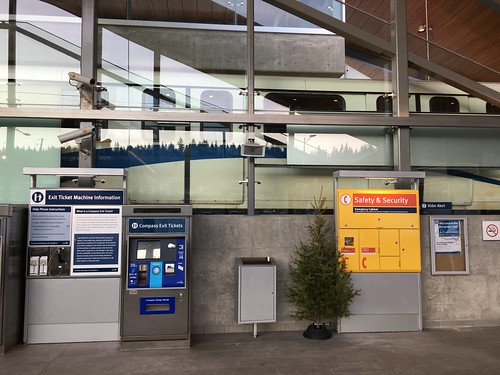Have you ever wondered why there is a wide rail in between the regular rails on the SkyTrain network? Well, this is the reaction rail and is part of the unique linear induction motor system used by SkyTrain. I was browsing the dark corners of the transportation-related Internet and discovered a paper called, “Linear Motor Propulsion for Urban Transit” by Kurt Vollenwyder.
 |
| Linear induction motor topology. Select image to enlarge. |
The SkyTrain was designed in Canada starting in the late 1970s. What made those engineers choose linear induction motors to power the rail rapid transit vehicle of the future?
SkyTrain is an automated system designed for 1980s computers. The linear induction motor design ensured that SkyTrain cars would accelerate and brake without sliding in all-weather conditions. This meant that SkyTrain cars could be deterministically started and stopped.
Linear induction motors also allow SkyTrain cars to operate on high-grades with ease such as the climb from Scott Road to Downtown Surrey, or along North Road.
To learn even more about SkyTrain technology, I suggest that you read the full paper.
Speaking about the Evergreen Extension, on Saturday Paul Hillsdon, Rob Bittner, and I decided to check out the most recent section of our rail rapid transit network. At Moody Centre, we discovered Alex Gaio and Aaron Meier who also decided to check out the Evergreen Extension on the same day. We joined forces.
 |
| At Inlet Centre Station with Rob Bittner, Alex Gaio, Paul Hillsdon, and myself. Photo by Aaron Meier. Select image to enlarge. |
I snapped some pictures, and uploaded them on Flickr.

This will be my last post of 2016; I’ll be back posting on Tuesday, January 3rd. Merry Christmas and have a great holiday season!

1 comment:
Skytrain actually has linear induction motors because originally, the system was supposed to be maglev (magnetic levitation) technology. The company that created the original design was German. However, there were problems with the ride quality and switching tracks, which forced the designers to use steel wheels and rails. Hence we got a dumbed down version of maglev that is somewhat more advanced than most metros!
Cheers,
Aaron
Post a Comment